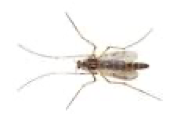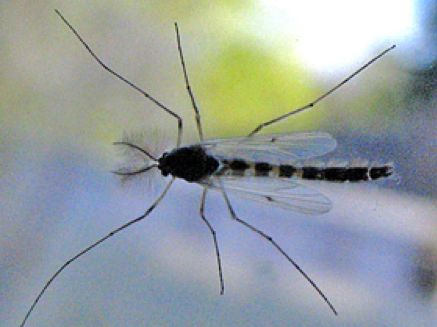
There are two types of midges that you will encounter in California: biting and non-biting midges. If you’ve ever been swarmed by hundreds of mosquito-like pests that bite and cause excessive itching, you’ve probably encountered biting midges. On the other hand, many midges do not bite. Midges travel in giant groups, covering parts of your home in a blanket of gnat-like bugs, and even blinding drivers and anyone trying to jog outside or eat on their porch.
What kind of midges are in California?
Biting Midges
Biting midges, also called “no-see-ums”, “punkies”, or “black valley gnats” are tiny gnat-like flies, measuring less than ¼ inch in length. Some have narrow spotted or clear wings. They emerge between mid-May through June in the Central Valley, when the ground begins to dry and crack. Although the actual bite is usually painless, the resulting small welt can be intensely itchy and irritating. Some who are allergic can suffer from itching and possible pain for days on end.
Non-Biting Midges
Non-biting midges can be slightly larger than biting midges, sometimes reaching up to ½ inch long. Their bodies are delicate, mosquito-like, but lack scales on their wings. Adults vary from brown, black, green, orange, or gray in color, with a humpback, and males have very feathery antennae. Some are also called “red worms” or “bloodworms” because of the visual presence of hemoglobin in their blood. Most live in fresh water while others are found in very moist soil, in wet moss, and under damp bark.
Throughout the non-biting midge season, which is typically April through September, homeowners become alarmed by large swarms of gnat or mosquito-like insects. Most large amounts of activity occur in giant swarms or small compact mating swarms, and a buzzing can be heard over a considerable distance. After sunset, adults become active and fly to night-lights, entering structures through the slightest of openings. Piles of eight to twelve inches of dead midges may accumulate in unwanted places, leaving behind a smell similar to dead fish.
What attracts midges to my property?
Midges live near bodies of water such as lakes, reservoirs, and ponds. If you home is close by even a small body of water, midges could be lurking, sometimes traveling up to ¼ mile. During peak non-biting midge season, extremely large groups can accumulate in freshly applied paints, hanging onto outdoor laundry, and clustering on screens. This activity can be so intense that it can be difficult to see while driving and unbearable to walk through. A lot of people experience extreme midge activity on jogs or at parks.
Are midges dangerous?

Biting midges suck blood from animals, humans, reptiles, and insects. Bites usually result in excruciating itching and, in some individuals, welts that can persist for several days. If you are near their breeding grounds, midges can appear in large numbers, resulting in many bites. Midges have not been known to transmit diseases to humans.
How can I get rid of midges at my home?
Structures such as residential homes as well as detached sheds and garages with outside lighting can attract large numbers of non-biting midges during midge season. Move light away from sensitive areas such as doorways, windows, patios, etc. Avoid the use of unnecessary lights until 45 minutes after sundown, because 90% or more of flight activity takes place before that time. Sometimes, eggs are laid on surfaces around lights and on buildings. These egg masses can become unsightly and smear when wet. By replacing a 100-Watt mercury vapor light (ultraviolet energy) with a 50-Watt high-pressure sodium vapor light, midge concentrations are significantly reduced. Lights least attractive to insects are sodium vapor or halogen with pink, yellow or orange tints and dichrom yellow bulbs. Black light traps (bug zappers) will kill midges, but unfortunately often attract more midges into the area than are killed.
How can I prevent midges?
Midge infestations can develop in and around buildings in well-watered soils and occasionally in standing water from air-conditioning units on building roofs. Clean up or remove stagnant, polluted water accumulating in bird baths, clogged gutters, water-holding tree stumps, flower pots, and old tires.
Because midges aren’t the strongest fliers, using porch fans at high speeds can temporarily deter them from descending upon your patio in the summer. Another way to prevent midges is to install screening around the outdoor area that you will be spending time in. Keep in mind, midges are very small so the screening needs to have extra small gaps. Personal flying pest or mosquito repellents containing DEET can help prevent midge bites when applied correctly, before spending time outdoors.
What Are Midges Professional Pest Control Services in Tracy CA?
Serving Northern California



